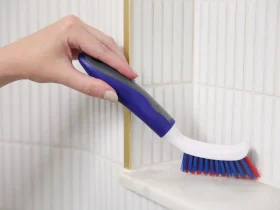Toys are an essential part of childhood, offering fun, learning opportunities, and developmental benefits. However, not all toys are safe for children, and some can pose serious hazards if not chosen or used properly. Ensuring toy safety at home is crucial for preventing accidents, injuries, and even long-term health risks. This guide covers key aspects of toy safety, including choosing safe toys, understanding potential hazards, and maintaining a safe play environment.
Common Toy Hazards
Many toy-related accidents result from hazards that parents and caregivers may not immediately recognize. Some of the most common toy-related dangers include:
- Choking Hazards: Small parts, detachable components, or broken toys can be easily swallowed by young children. Items like small balls, marbles, and tiny building blocks should be kept away from toddlers.
- Strangulation and Suffocation: Toys with strings, ribbons, or cords longer than 12 inches can pose a strangulation risk, especially for infants and toddlers. Plastic packaging can also lead to suffocation if left within reach.
- Sharp Edges and Points: Some toys have sharp edges or points that can cause cuts and puncture wounds. This is particularly common with cheap or broken toys.
- Toxic Materials and Chemicals: Some older or unregulated toys may contain harmful chemicals such as lead, phthalates, or BPA. Exposure to these substances can lead to serious health issues.
- Battery Hazards: Button batteries or lithium coin cells found in some toys can be deadly if swallowed. These batteries can cause internal burns and severe damage.
- Electrical Hazards: Electric-powered toys should have proper safety certifications and be kept away from water to prevent electrocution risks.
Choosing Safe Toys
When purchasing toys for children, safety should always be the top priority. Here are some tips for selecting safe toys:
- Check Age Recommendations: Always follow the manufacturer’s age guidelines to ensure the toy is suitable for your child’s developmental stage.
- Look for Safety Certifications: Opt for toys that meet recognized safety standards such as those set by the Consumer Product Safety Commission (CPSC) or the American Society for Testing and Materials (ASTM).
- Avoid Small Parts for Young Children: If a toy or its components can fit inside a toilet paper roll, it is a choking hazard for children under three years old.
- Choose Non-Toxic Materials: Verify that the toy is free from harmful chemicals and painted with non-toxic, lead-free paint.
- Opt for Durable Construction: Well-made toys with no sharp edges, loose parts, or weak seams reduce the risk of injury and breakage.
- Beware of Magnets and Batteries: High-powered magnets and button batteries should be avoided in toys meant for young children, as they can cause serious internal injuries if swallowed.
Maintaining a Safe Play Environment
Even after selecting safe toys, it’s important to ensure children play with them safely. Parents and caregivers should follow these best practices:
- Regularly Inspect Toys: Check for broken or damaged toys and dispose of any that have sharp edges, loose parts, or exposed wiring.
- Store Toys Properly: Use toy chests or storage bins without heavy lids to prevent accidental injuries. Keep small toys away from younger siblings.
- Supervise Playtime: Especially with younger children, adult supervision helps prevent accidents and ensures toys are being used correctly.
- Teach Safe Play Habits: Encourage children to handle toys responsibly and avoid rough play that might lead to injuries.
- Keep Batteries Secure: Ensure battery compartments are tightly sealed and inaccessible to small children.
What to Do in Case of a Toy-Related Accident
Despite all precautions, accidents can still happen. Here’s how to respond in an emergency:
- Choking: If a child is choking, perform the Heimlich maneuver or administer back blows and chest thrusts for infants. Call emergency services immediately if the child cannot breathe.
- Ingestion of a Hazardous Object: If a child swallows a battery, magnet, or toxic material, seek medical attention immediately and do not attempt to induce vomiting.
- Cuts or Puncture Wounds: Clean minor wounds with soap and water and apply a bandage. For deep cuts, seek medical assistance.
- Strangulation or Suffocation: Remove any tight objects around the child’s neck and call for emergency help if they are not breathing.
Conclusion
Toy safety in the home is a crucial responsibility for parents and caregivers. By understanding potential hazards, choosing safe toys, and maintaining a secure play environment, families can significantly reduce the risk of toy-related injuries. Always stay informed about recalls and safety updates to ensure your child’s playtime remains both fun and safe.
Infographic provided by Scott Marshall Injury Attorney, one of the top product liability lawyers in Florida









